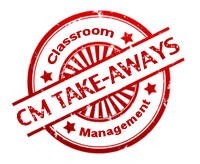
Creating a positive learning environment through good classroom design is important, but of far greater importance is how a teacher relates to students. A well-designed classroom with colorful, aesthetically (and functionally) appealing displays and efficient seating arrangements conducive to learning are all for naught if teachers relates poorly to their students. Conversely, positive teacher-student relationships can make up for a poorly designed classroom or a less than ideal room assignment. Building positive teacher-student relationships is, in fact, so important that it is arguably the most important factor contributing to the success of students both behaviorally and academically. Students who experience respect and unconditional acceptance from their teacher are more likely to be compliant, respectful, and open to learning, while students who experience disrespect and negativity are more likely to exhibit the same, act out, and misbehave.
The great value of fostering good teacher-student relationships, therefore, cannot be overstated. Trying to understand the complexity of human behavior and social interactions between individuals and within groups, however, is another matter. The issues are complex, and attempting to isolate the variables that contribute to positive relationships is not always easy and straightforward.
Personality, teaching style, and presence all play a role, but how and to what degree? We do not pretend to have all the answers, but we do know that there are common strategies in play in the classrooms of highly effective teachers, who regularly and consistently develop positive student relationships, which can be learned and developed by all educators.
![]()
Classroom Management Benefits for Students
- All children deserve the very best education you can deliver. You can do a great deal to help a student feel like a valued classroom member. The students in your classroom will enjoy and appreciate other students, who through your guidance, are respectful, motivated, and responsible.
- Teachers who undergo my training tell us that their students report many common positive effects such as, in order: an increase in their enjoyment of the teacher and subject matter; a motivation to come to class more often, and to pay more attention in class. Thus, my training facilitates both student motivation for learning and their enjoyment of the course, and enhances student receptivity to what is being taught.
- Teachers will learn how to “know” their students well and respond to them individually. Students in such a classroom feel seen, known, and valued – which improves the classroom culture and tone, and replenishes energy and time for intellectual work together.

